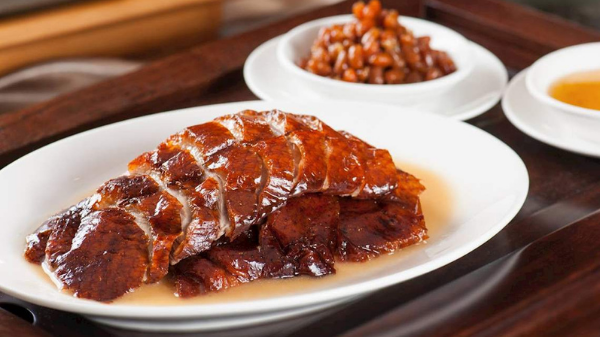Anyone who has lived in Hong Kong long enough know that siu-ngoh, which is Cantonese for roast goose, is an iconic Cantonese dish that, if done right, wins the hearts of any meat lover that appreciates a delicious barbecue dish. With the myriad of siu mei, which translates to roasted meat, restaurants around the city offering seemingly the same dish, it can be confusing as to what makes one stand out from the rest. This are some secrets behind how some of Hong Kong’s best roast goose dishes are made:

The oven
Traditionally roast goose is roasted in charcoal ovens, which give the bird its sumptuous crispy skin and tender meat. However, over recent years however, many regulations set by the Food and Environmental Hygiene Department has made it difficult for restaurants to run a charcoal oven. On top of that, the high cost and lack of space has has led many siu mei owners to modernize their cooking methods and recipes to adopt gas ovens instead. There are only a few places in the city that still uses charcoal ovens, Yue Kee, being one of them insists on keeping up with tradition and as a result has been winning over locals and tourists alike with its aromatic and smoky geese for over 60 years.
The goose
For any meat dish to be mouth-wateringly delicious, the animal has to be well raised and cooked fresh. Healthy geese feed on grass or rice, which given the lack of farmlands and agricultural landscape in Hong Kong, it isn’t surprising that geese are imported to Hong Kong from its neighbouring cities in China. According to the food and health bureau, 90% of the total food supply in Hong Kong is imported food. Tin Hung restaurant which has been opened for almost a decade ships their geese in fresh daily from a farm in Foshan while Yue Kee on the other hand raise their own game in a farm in Guangdong where the geese are kept in clean environments and fed raw rice instead of man-made feed. This might explain why both restaurants have both landed a spot on the Michelin guide.

The marinade
Every restaurant that is worth noting has built a reputation on the long-standing secret recipes that has been kept in the family for generations. But if there is something that is fundamental for any good roast goose, it would be the marinade. Stuffed with staple ingredients like salt, sugar, chinese cooking wine, spices, ginger and spring onioin and sealed in with a skewer. The juices within, called drippings, are then poured out when chopped, and poured over the dish before serving for an extra kick of richness. Some of the richest roast goose in the city with the oldest family recipes are the almost eight decade old Yung Kee and its contender Kam’s whose wonder was the grandson of one of the original Yung Kee members.
The sauce
A mouth watering goose is not to be served without the iconic plum sauce. Sweet and slightly acidic, the plum sauce acts as a neutralizer to balance out the oil and richness of the goose. Only a fine line or a gentle dip is enough to complement the rich and savory goose. Unlike many other restaurants, Yue Kee makes their plum sauce homemade
Feature image from Yung Kee restaurant





